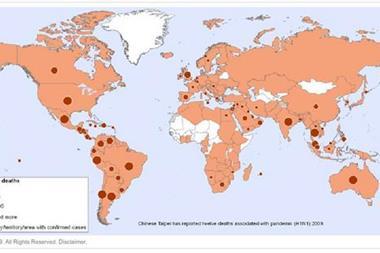Mike Osborne discusses some of the lessons learnt from inclement summer weather and the threat of swine flu
As autumn approaches we can look back at a European summer that definitely delivered more than its usual mix of challenges to businesses. Not only were organisations faced with the problems of maintaining margins and productivity in the face of the economic downturn, there have also been heatwaves and floods to contend with – as well as the ubiquitous swine flu, which has compounded levels of staff absence.
This triple whammy of threats to business continuity has left many businesses reeling. Some companies report that this summer has proved particularly difficult in terms of dealing with a negative market and skeleton staffing. At a time when many organisations have already reduced head counts and slimmed down operations to survive, suddenly having members of their remaining staff out of action and trying to do more with less have proved all but impossible.In addition, this winter we expect an escalation in the numbers of people affected by swine flu.
This could well mean further office closures and inflated absence levels, on top of those normally experienced as a result of conventional flu and weather related problems.
Dealing with the swine flu threat has brought home to many businesses just how exposed they are to supply chain failure. Often it is not until a supplier is out of action that an organisation fully realises the interdependencies that exist in its supply chain. This can take unexpected guises. For example, if you had a serious IT problem but your IT contractor’s staff numbers were decimated by swine flu so that there were delays in getting your system up and running again, what would be the effect on your business?
“There has been a startling lack of real preparation for giving staff remote access to servers
Inevitably, this summer has also raised the issue of home working on the corporate agenda, with companies investigating how they can continue to operate should they need to close an office or facility. The idea of working from home and the use of portable devices are both widely accepted, so in theory this should be a straightforward option.
However, in my experience there has been a startling lack of real preparation for giving staff remote access to servers. Some firms have scrambled to get a defined system in place to codify access and formalise their approach in time – and it is doubtful that they could have done this if there had been significant sickness absence in their IT department.
Similarly, the absence of common security policies across different hardware is marked – often there are few or no checks on the devices being plugged into a network, and the threat of viruses infecting a network is high. Ironically, while business continuity managers are trying to keep the business going by providing remote access, they are actually opening their network up to new threats that can compound the potential business interruption they are already facing.
Both in terms of supply chain resilience and co-ordinated strategies for allowing effective remote working, the summer has provided a useful catalyst for many in giving a warning of what might be to come.
Postscript
Mike Osborne is managing director of ICM Continuity Services




















No comments yet